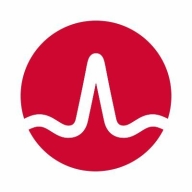

OpenText SiteScope and DX SaaS are competing IT management solutions. DX SaaS seems to have the upper hand due to its advanced features and integration capabilities.
What features are offered by OpenText SiteScope in comparison to DX SaaS?OpenText SiteScope's key features include comprehensive monitoring capabilities, extensive alerting options, and robust performance tracking. DX SaaS offers advanced analytics, AI-driven insights, and seamless integration capabilities. While both platforms provide strong monitoring functionalities, DX SaaS's advanced analytics and AI-driven insights offer a significant advantage.
What areas of improvement can be found in OpenText SiteScope in comparison to DX SaaS?Users suggest that OpenText SiteScope could improve its reporting capabilities, modernize its interface, and enhance real-time data visibility. DX SaaS users recommend improvements in support response times, customization options, and user training resources. OpenText SiteScope mainly needs better reporting and a modern interface, while DX SaaS needs faster support and more customization.
How is the ease of deployment and customer service of OpenText SiteScope in comparison to DX SaaS?OpenText SiteScope is praised for its straightforward deployment model and effective customer service. DX SaaS also has an efficient deployment process but receives mixed feedback regarding customer service responsiveness. OpenText SiteScope generally leads in customer service satisfaction, whereas DX SaaS is known for its ease of deployment.
What setup costs and ROI can be seen with OpenText SiteScope in comparison to DX SaaS?OpenText SiteScope is viewed as having a higher initial setup cost but delivers a solid ROI over time. DX SaaS offers competitive pricing and a quicker perceived ROI due to its advanced features. While OpenText SiteScope has a higher initial cost, DX SaaS is often considered more cost-effective in the long run due to rapid ROI.

Dx SaaS is a solution whose goal is to ensure that businesses and organizations can monitor and manage the way that users experience their applications. This solution contains many powerful tools that are designed to give administrators the maximum amount of control over the experiences that clients have when employing their applications. Organizations and businesses can rest easily and ensure that the product they put out into the world is always being watched for potential issues that will be resolved proactively and quietly.
Dx SaaS Benefits
Some of the benefits that come from using Dx SaaS include:
Dx SaaS Features
When users choose to employ the DX SaaS solution, they gain access to many different capabilities. These features include:
Reviews from Real Users
The DX SaaS solution enables companies and organizations to take charge of the digital experiences that their customers receive. It is designed in a way that empowers these companies to truly monitor their applications and maintain a positive user experience. DX SaaS recognizes that applications can be run on any number of platforms. As a result, solutions that monitor and analyze applications need to be capable of handling a wide variety of platforms. This is one of the considerations that the solution’s designers made integral to its design.
Administrators can leverage DX SaaS to spot potential issues before they can become problems for the users of their applications. DX SaaS has metrics that can provide application administrators with important insights. Patterns and areas where trouble can arise are immediately exposed so that administrators can take the steps that are necessary for the applications to run smoothly.
A consultant at a technical services company writes, “It supports numerous platforms.” Furthermore, they add, “The CA APM blaming metrics are quite useful in identifying a potential issue.”
OpenText SiteScope is an agentless monitoring program that tracks the availability and performance of distributed IT infrastructures such as servers, network devices and services, applications and application components, virtualization software, operating systems, and other IT enterprise components.
OpenText SiteScope is an autonomous hybrid IT monitoring system that can monitor more than 100 different types of IT components in real time, thanks to a lightweight and highly customizable remote access architecture.
With OpenText SiteScope, IT teams can get the data they need to keep on top of problems and eliminate bottlenecks before they become major concerns.
OpenText SiteScope can reduce total cost of ownership (TCO) by utilizing agentless technology, which eliminates the need to install and monitor agents on each box. Manual activities can be automated, and teams can save time and effort by using pre-packaged solution templates.
OpenText SiteScope Features
OpenText SiteScope has many valuable key features. Some of the most useful ones include:
We monitor all Application Performance Monitoring (APM) and Observability reviews to prevent fraudulent reviews and keep review quality high. We do not post reviews by company employees or direct competitors. We validate each review for authenticity via cross-reference with LinkedIn, and personal follow-up with the reviewer when necessary.